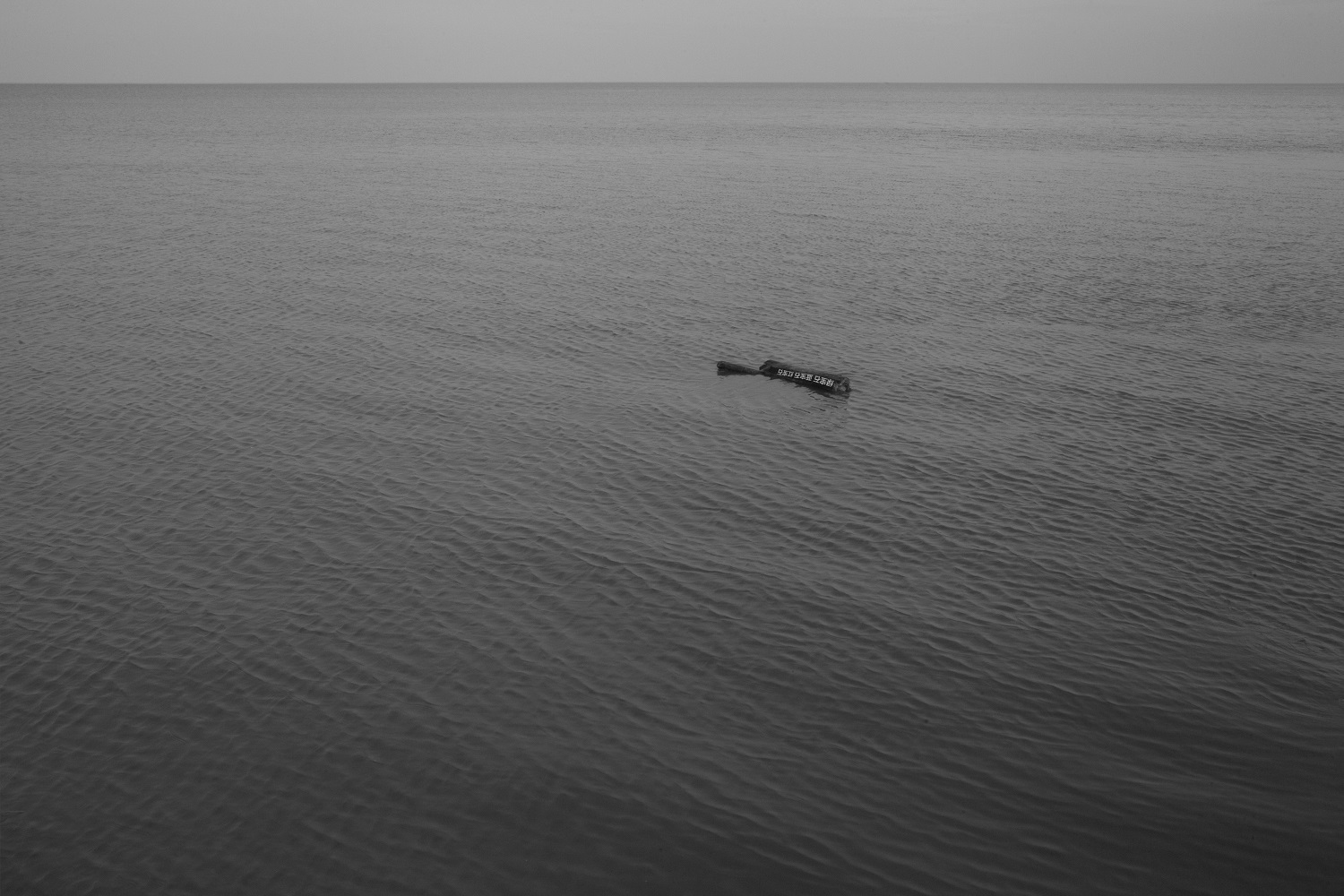 DEC 21, 2018 – JAN 14, 2019
DEC 21, 2018 – JAN 14, 2019
On December 21, at 7pm, the Zarya Air Workshop will celebrate the opening of “Invisible Shore,” an exhibition of photographs by Ma Haijiao (PRC), taken while the artist was in residence in Vladivostok. The exhibition will be on view until January 14, but to visit after the opening, you will need to first check in at the reception desk.
As the first Chinese artist to participate in the residency, Ma Haijiao reflects on the relationship between China and Russia, as it touches on both the history and present of Vladivostok. The two photographic series are based on the artist’s own impressions as he visited the city for the first time, serving as a kind of poetic interpretation of his experience.
As is well-known, a Chinese diaspora has lived in Vladivostok since the moment of its founding. From the end of the 19th century through the beginning of the 20th century, this diaspora was quite substantial, wielding considerable influence on the development of the economy and the urban lifestyle in general. After the 1930s, any connections between the city and China would be severed for decades, so that it was only in the 1990s that the markets started to fill up with Chinese recently that Vladivostok became a destination for Chinese tourists.
The history of this relationship, so specific to Vladovostok, served as the starting point for Ma Haijiao’s work. The series “Invisible Shore” mobilizes the fragments of Chinese text integrated into the city’s streets. During his first few excursions around Vladivostok, the artist was impressed by the abundance of Chinese phrases embedded within daily life as a familiar part of the visual appearance of the city. To come across one’s native tongue in such a big country was an unusual experience for the artist, who had yet to encounter this phenomenon in his travels.
At the same time, the Chinese text that one can find in Vladivostok has a very distinct character; among the examples are such phrases as the traditional "Wishing You Safety Wherever You Go" (a typical New Years’ greeting in China) or “Let It Go” (one of the basic principles of Buddhism) on a pendant in the interior of a taxi, or “Unlimited Meat” and "The Landscape Here is Beyond Compare" on a restaurant sign. The artist collected these assorted fragments of text and transferred them onto pieces of wood, which he released into the waters around the border areas.
Some of the photographs were taken on Lake Khanka, which runs along the border between China and the Russia Foundation. Others were taken in the waterways of the Bay of Peter the Great and the waters around Russky Island and Amur Bay. The artist sees water as the element connecting the two countries, since its constant fluidity allows it to endlessly flow back and forth from one shore to the other. The title of this series refers to the fact that somewhere beyond the horizon, on the opposite edge of the vast expanse of water lies another land, unknown to us, which is too far away for us to see.
The second series, “In a Quiet Place,” refers to the role of the Chinese diaspora within the history of the city. The artist imprints standard advertising banners with the phrase, "The worst thing that the people have done for us is that they all left here at once." This sentence is an homage to a quote from a book by Dmitry Ancha and Nelly Miz, titled The Chinese Diaspora in Vladivostok: The Pages of History, which describes the life of the Chinese population at the turn of the 20 th century: The worst thing that the Chinese have done for us is that they all left Vladivostok at once." It is well-known that the Chinese work force was indispensible to the city and representatives from various nationalities lived in close partnership with one another. However, the artist is putting his emphasis not so much on the significance of the Chinese diaspora, as on the universality of the statement that any nationality that abandons its home leaves palpable wounds behind. And one of the examples of this trauma could be the Far East in the 1930s, when, following the shift in the USSR’s policies regarding foreign residents, the large majority of the Chinese population was deported from the region.
This exhibitions of photographs by Ma Haijiao concludes the 2018 season of the residency program, which hosted 20 individual artists and collectives from 10 countries around the world.
*Ma Haijiao (born 1990) is a photographer and video artist who lives and works in Beijing. He studied at the China Academy of Art, where he received both a BA and later an MFA. His art practice takes up an enduring concern with life’s daily routines, and taking this as his starting point, he traces its logic to shape video narratives and other works. Among his recent exhibitions are “July in Berlin” (Migrant Bird Space, Berlin, 2018); “Happy Valley” (Tabula Rasa Gallery, Beijing, 2018); “Today's Yesterday,” the 1st Anren Biennale (Anren, Chengdu, 2017); “Message to the Future” (Canvas Contemporary Gallery, Amsterdam, 2017); “The New Normal” (Ullens Center for Contemporary Art, Beijing, 2017); “Semantic Satiation” (Tabula Rasa Gallery, Beijing, 2017); “Why Not Ask Again,” the 11 th Shanghai Biennale (Power Station of Art, Shanghai, 2016); and “Fly Without Wings” (V ART Center, Shanghai, 2015). Ma Haijiao was a finalist for the 10th Three Shadows Photography Award and a nominee for the A021xPORSCHE Young Chinese Artist of the Year in 2017 His work, Mr. Quan, can be found in the collection of/the Power Station of Art in Shanghai.
For more information about the artist, please refer to his website: www.mahaijiao.cn
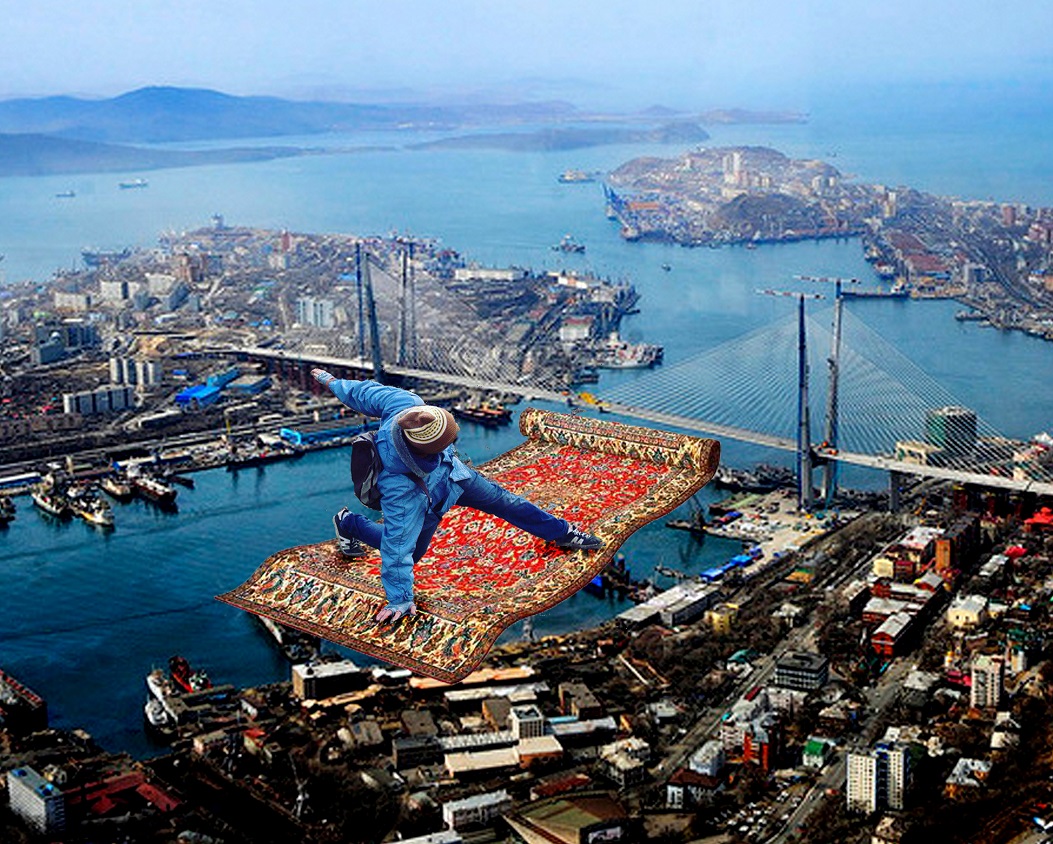
NOVEMBER 17 – 25, 2018 / ARTIST RESIDENCY STUDIO (CRW, ENTRANCE 5)
Lyokha G. is a Vladivostok-based musician and artist working with found objects, assemblages, lo-fi computer graphics and drawing from life, capturing the idiocy of everyday life. Incidentally, the word “artist” doesn’t quite apply to him. He prefers to call himself either a podelochnik (“craftsman”) or a poddelochnik (a counterfeiter), a play on words that effectively removes him from any possible integration into the dominant system of contemporary art.
Indeed, “crafts” or “fakes” make up one of his most significant series, which consists of assemblages of discarded toys, each accompanied by a caption and brought together into small compositions, suggesting absurd narratives. Lyokha G. also actively works with the “Caesar and Tripod Studio”, regularly publishing updates on his community page in VKontakte. Among the studio’s works one can find simplified and deliberately “bad” graphic design, mocking the markers and clichés pumped through advertising, the widespread adherence to Anglicism, and more generally the excessive pathos surrounding goods, services and “creative labor.”
In his project for the residency, the artist develops on the foundation for this earlier series, only on a much larger scale. The assemblages become full-scale installations, some even interactive, while some unrealized ideas from earlier finally see their material embodiment. “Little Tricks in the Little City” gathers a selection of inventions aimed at improving the life of city-dwellers. For instance, it’s a well-known fact that Vladivostok has a problem with parking in the courtyards of residential houses, and Lyokha G. offers an alternative method of vertical parking. Among other “tricks” include an “all-access” ring capable of opening any door, signs for conversations between motorists, mobile fences for pedestrian crossings and many other paradoxical objects.
It should be noted that the resolutions proposed by the artist are not intended to be put into practice. After all, utility is not the artist’s end goal. Rather, Lyokha G.’s little “tricks” are mischievous responses to the general hopeless unsettledness that accompanies us every day with every step we take. In order to not let this routine get you down, you need to be able to laugh at it, diminishing its power.
The exhibition also includes interventions by visitors to Lyokha G.’s studios, a set of pod(d)elki created over the past month. The artist demonstrates just how accessible contemporary art is to everyone by showing anyone interested how he creates his assemblages. It’s possible that the teachings of Lyokha G.’s may even go “to the people,” but the question as to where it will lead the artist himself remains open.
*For Reference: Lyokha G. (Aleksey Krutkin, born 1983) is a Vladivostok-based artist and musician, who heads up the “Caesar and Tripod Studio” and the “Weirdo Fashion” initiative. He is also known as poet and songwriter “Lyonya Chelushkinsky,” a guitarist and founding member of the band, BIO VIA ai JI, a pioneer in the philosophical movement “bio-idiotism” and the chief artist behind the posters for the Vladivostok club, Contrabanda. In 2017, he was featured in a solo show at Vladivostok’s Arka Gallery. Additionally, he has participated in group exhibitions including “Tragedy in the Corner” (The Museum of Moscow, 2018), “Next to the Gods” (ARTIS Gallery, Moscow, 2017) and “Rebels at the Edge” (MMOMA, 2017, Erarta Museum, 2016, ZARYA CCA, 2015).
To learn more about the artist’s projects, please visit his website: https://biovia.jimdo.com
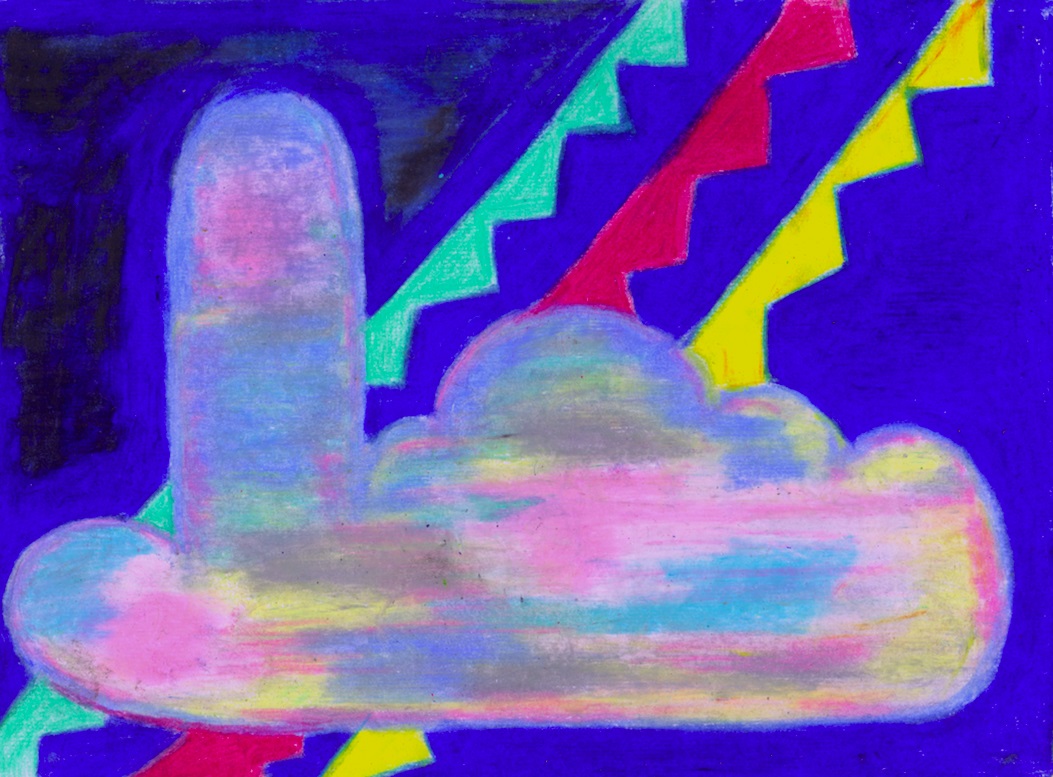
OCTOBER 27 – NOVEMBER 4 / ZARYA AiR STUDIO (ENTRANCE 5)
On October 27, from 12:00 pm until 5:00 pm at the Zarya AiR studio (Zarya Factory, Central Repair Workshop, Entrance 5) there will be a reception to mark the opening of the exhibition “From Your Morning to My Night”, which surveys the works of residency participant Anastasia Ryabova (Moscow.) Admission is free of charge, but the age is limited to 18+. The exhibition will be on view until November 4, but to visit after the opening, you will need to first contact the reception desk.
Anastasia Ryabova will present a series of works on paper produced during her stay in Vladivostok. Over the past two months, she has methodically created drawings in oil pastel, as a kind of daily ritual informed by the artist’s interest in erotic mysteries. She sees her own working method as closely tied to the legacy of Surrealism, experimenting with its new political reading.
The very act of creating a drawing interests the artist as a process. “Since childhood, I have thought of drawing as a form of resistance to the order of things,” Ryabova remarks. “And when professional obligations come flooding in, it makes for the perfect ally in this innocent rebellion. If everyone’s life was woven from practices like dance or drawing, then people would have never needed to invent the word ‘procrastination.’”
The exhibition’s title was inspired by correspondence between the artist and her colleagues located in a very different time zone, nearly seven hours away from Vladivostok, so that it’s always a challenge to grasp that it’s morning there, but night here. The exhibition will officially open at noon with musical sets from artists and DJs Phaumer (Vladivostok), NOfuture (Kasia Wolinska, Berlin), Golde (Kirill Kryuchkov, Vladivostok), and Workpop (Vladivostok). As Ryabova says, “the event is not really planned, but rather left spontaneous, with all the characteristic features of this type of format. As with any impulse, the equipment will be turned up to the top volume and the world will be turned on its head. No one will understand anymore where there is dancing and where there is drawing.”
Both events are held with the support of Night Movement, which was co-founded by Ryabova.
The exhibition will be on view until November 4, but to visit after the opening, you will need to first contact the reception desk.
* Anastasia Ryabova (born 1985) is an artist, teacher and researcher living and working in Moscow. In addition to her practice, she curates exhibitions, publishing and educational projects and writes critical essays on contemporary art and architecture. In 2011, she was recognized with the Kandinsky Prize for “Media Art: Project of the Year.” She is the founder of the Academy of Whistling Through Tears. Since 2013, she has worked on the project Zvezdniy Prospekt (2013 – ). That same year, she became the initiator and editor of Zadachnik, a publication about the city and political calculus. She is the author and curator of the archive Artists’ Private Collections (2010 – ). She curated the exhibition “False Calculation Presidium” in 2012 and founded the online magazines, megazine.biz (2009) and Night Movement (2015 –). Additionally, in 2013, she has participated in the exhibition action “>10” (2013). She is the co- author of the manual Introduction to the Profession of the 21st Century (2017).
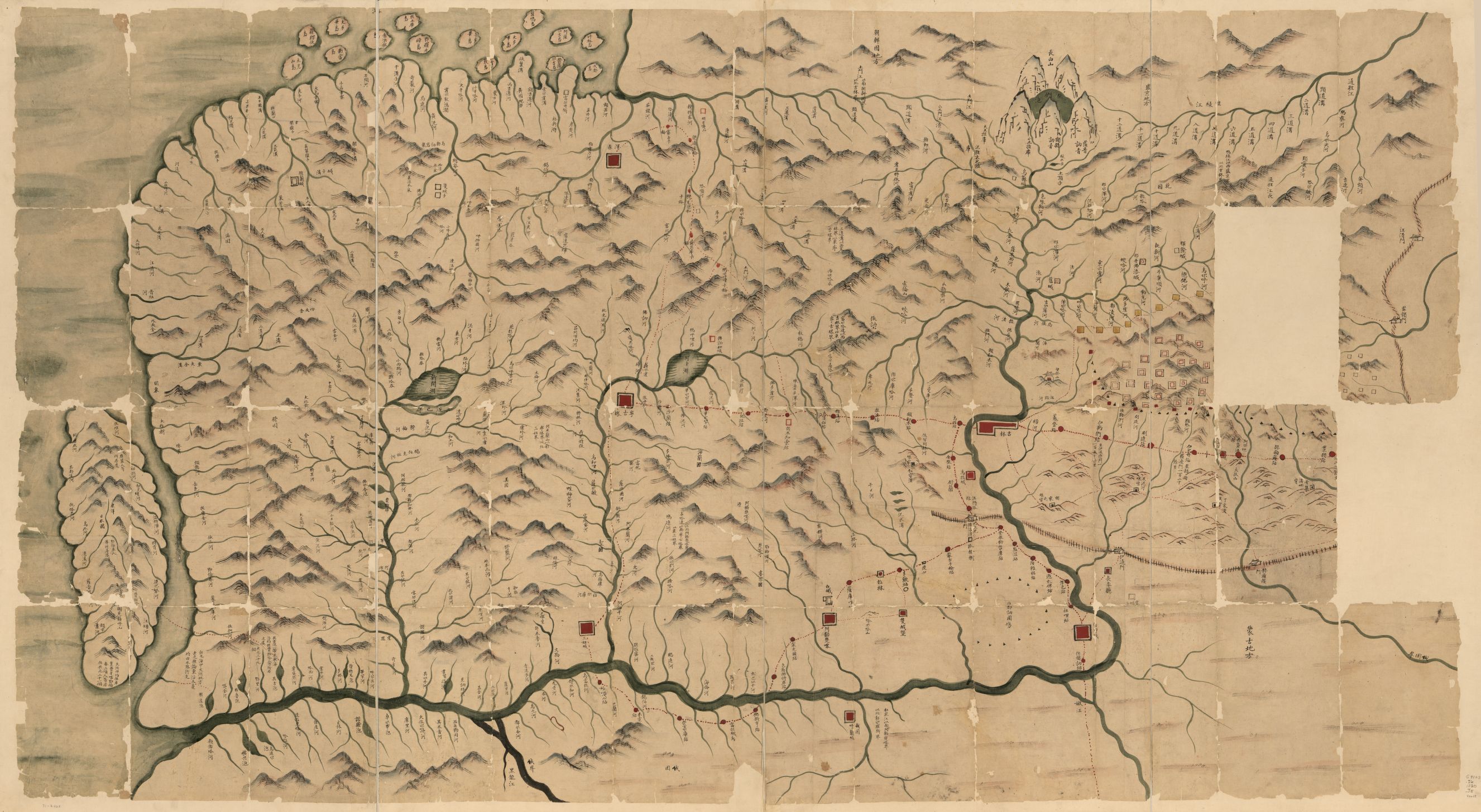
OCTOBER 7-9, 2018. VLADIVOSTOK, ZARYA CCA / 18+
Between One Northeast and Metageography: towards the new politics of geographical imagination
The center of Contemporary art ‘Zarya’ (Vladivostok) in a period between 10.6.2018 and 10.9.2018 hosts two exhibitions and a series of events dedicated to the geographical imagination in art. Two key anchors in the program are openings of two exhibitions: “One Northeast” on 6, Oct and “Metageography” on 9, Oct. To unveil the theoretical bridges between the two exhibitions, a performative symposium with participants of both exhibitions and specially invited speakers will be hosted.
The symposium will work with the analysis, deconstruction of the geographical imagination from the one side, and with the attention to the emancipatory and social role of the new imaginations of space, on the other. How crucial are the images of the space in its governing? Are independent, multi-verse, progressive politics of geographical imagination possible on the field of art? How important and influential are those tools that artists, geographers, curators and critics can use in their own politics of geo-imagination? Case studies and examples of concrete artistic, cultural and curatorial tactics in the policy of geographical imagination.
In light of the geopolitical positioning of Northeast Asia, or “Primorye” the symposium will include political-poetical contributions dedicated to the transgressive movements of the region. Tectonic shifts and rifts at the far end of the Eurasian landmass give rise to a kind of ‘Northeast’ or ‘Primorian’ thinking (the title depends on where we look at the area from, and reflects in its diversity the potential for multiple, including hybrid, geographic imagination) and are tied into changing geopolitical landscape. Embodied as much by radical artists and writers in history, as by the paths and traces of the ‘common’ people, the program refocuses on the Northeast or Primorye as a potent site for geo-imaginations, including new, emancipative and hybrid ones.
Conveners: Nikolay Smirnov & Unmapping Eurasia
SCHEDULE
6.10.2018 (Sat)
- 19:00 Opening of the“One Northeast” exhibition (curators Mi You and Binna Choi) Including Minja Gu's ritual and Lucie Tuma’s performance
7.10.2018 (Sun) — performative symposium, 1st day
- 11:00 Symposium Opening
- 11:15 Anastasia Ryabova. Star Road – 3
- 13:00 Break
- 15:00 Nikolay Smirnov. Speculative Geography: Orientalisms in 山水style
- 16:00 Coffee break
- 16:30 Lucie Tuma. Somatic Workshop
- 17:00 Mi You, Binna Choi (Unmapping Eurasia)
- 18:00 Anton Karmanov, Jeonhwan Cho. Intervention
8.10.2018 (Mon) — performative symposium, 2nd day
- 15:30 Dmitry Zamyatin (geographer, poet, artist, the ideologist of “Metageography”)
- 16:00 Vladimir Sokolov (historian, author of the research and exhibition about “Chinese Tartary” and geohistorical images of current Primorye, Vladivostok)
- 17:00 Coffee break
- 17:30 Vladimir Bulatov (geographer, head of cartography department of State Historical Museum, Moscow)
9.10.2018 (Tue)
- 15:30 Kirill Svetlyakov (curator, chief specialist in contemporary art of State Tretyakov Gallery, Moscow)
- 16:30 Cosmin Costinas (Para Site, Hong Kong). A Journal of the Plague Year
- 17:30 Anton Vidokle (artist, founder of e-flux, New York/Berlin). Biocosmism in Japan. Screening and Conversation with Koichiro Osaka (curator, Tokyo, Asakusa)
- 19:00 Opening of the“Metageography” exhibition (curators Nikolay Smirnov, Kirill Svetlyakov, scientific adviser Dmitry Zamyatin)
- 21:00 Pill Couple concert
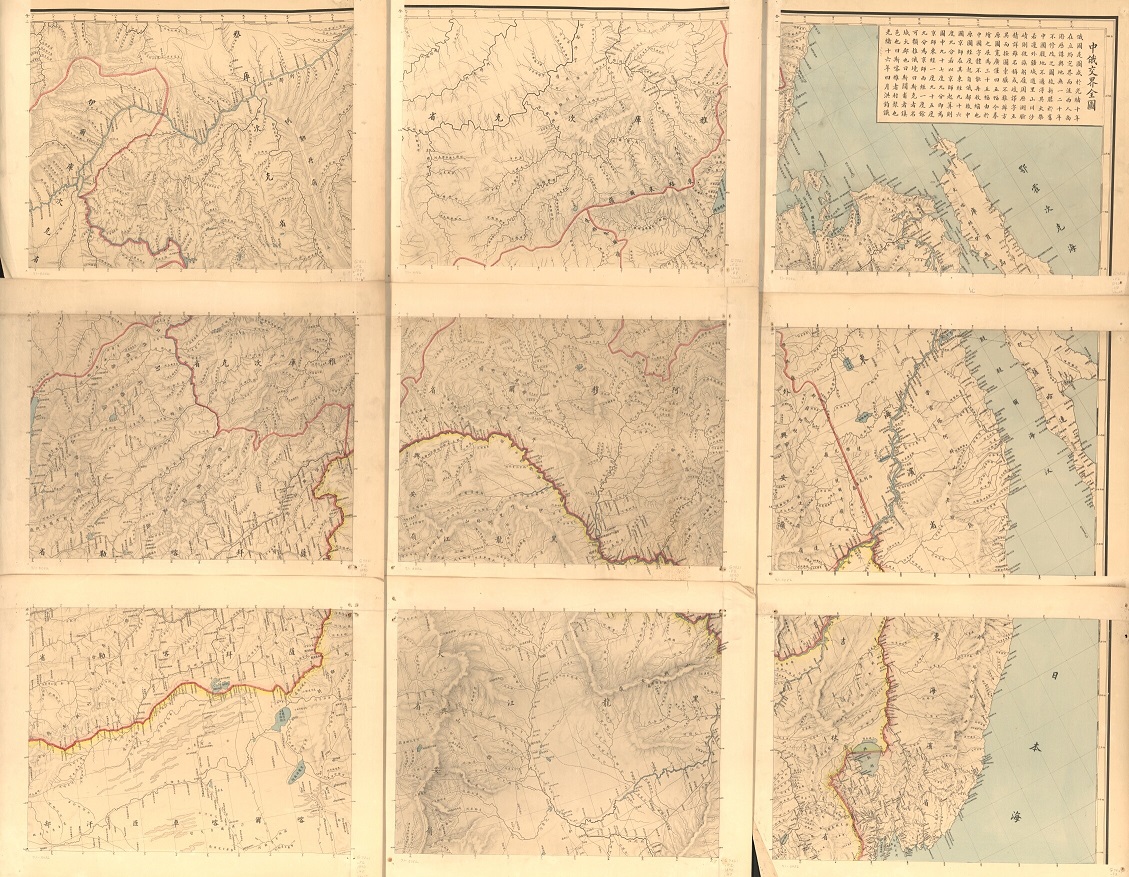
The Zarya Center for Contemporary Art is proud to announce an international exhibition dedicated to the transcultural position of Vladivostok within Northeast Asia, featuring the participation of artists Elena Anosova (Russia), Jeonhwan Cho (South Korea), Jungnak Choi (South Korea), Minja Gu (South Korea), Hero4Hero (Russia), Anton Karmanov (Russia), Elena Kovylina (Russia), Royce Ng (Hong Kong), Sergey Novikov (Russia), Soyoung Park (South Korea), SASHAPASHA (Finland) and Tuo Wang (China), Leif Holmstrand (Sweden).
The latest exhibition at Zarya Center for Contemporary Art invites visitors on a journey through Vladivostok and the Eurasian landmass in search of new ways of exploring spaces where historical, political, economical and spiritual dimensions intersect. This endeavor focuses on Northeast Asia, a region dotted with political borders, where Russia meets China, Mongolia, South Korea, North Korea, and Japan.
“We find ourselves in one of the most interesting regions of Russia, one that warrants closer attention. This is why we put such an emphasis on exploring the local context. The exhibition ‘One Northeast’ looks at the location of Vladivostok and Primorye outside the typical framework of the Russian context, instead placing it within a larger region of a globalized world that is rapidly changing and whose shifts are interesting to everyone,” explains Zarya CCA’s chief curator, Alisa Bagdonaite. “When we invited international curators You Mi and Binna Choi, we gave them the opportunity to draw our locality with broad strokes on the map of the gigantic, complex Northeast region.”
“We turned to the belief of the Korean peoples of the Northeast that the unity of earth and sky takes place through mankind. ‘One Northeast’ is a call to communication and collaboration not through the language of geopolitics, but through the language of ‘geopoetics’; the range between the two languages is the subject of our study,” exhibition curator You Mi explains. “We are interested by what usually slips past the established view of the region, focusing on bringing together transgressive ideas, overlapping trends and ideas that transcend borders, as well as on forces of non-human origin, such as Cosmism and Shamanism.”
An important element of the exhibition is the accompanying performative symposium, “Towards a New Politics of the Geographical Imagination,” which will run from October 7 through 9, spanning the time between the opening of the exhibition “One Northeast” (October 7 – December 16, 2018) and “Metageography” (October 10, 2018 – January 13, 2019) and incorporating participants and specialists from both projects, as well as specially invited guests. Together, the three events – the two openings and the symposium – make up their own international mini-biennale, dedicated to the practice and politics of geographical imagination.
The exhibition is part of the long-term transcultural project “Unmapping Eurasia,” initiated by the Casco Art Institute (Utrecht) and founded on a dialogue of partners from different countries.
Zarya Center for Contemporary Art opened in Vladivostok in 2013 in the creative cluster on the grounds of the former Zarya textile factory, as part of an initiative by entrepreneur and patron, Alexander Mechetin, the founder of Russia’s largest alcoholic beverage company, BELUGA GROUP. Zarya CCA is designed to bring to the Primorsky Krai the highest achievements of contemporary culture in Russia and beyond, while fostering artists and the local art scene. Since the second half of 2014, ZARYA CCA has operated the only artist-in-residence program in the Far East, offering artists from different cities or countries the opportunity to realize projects in Vladivostok, with a focus on regional culture and the geographical context. In 2018, the program’s open call received a total of 310 applications, submitted by artists and collectives from 39 countries around the globe. Of this number, the jury selected 21 proposals for realization at ZARYA CCA.
* “Unmapping Eurasia” is a transcultural artistic research project initiated by the Casco Art Institute (Utrecht). This project aims towards a common heritage and to that extent expands to include new partners, such as the Dutch Art Institute, together with the Athens-based nonprofit gallery State of Concept and the Nam June Paik Memorial Museum in Seoul. “Unmapping Eurasia” attempts to overcome the existing “cartographic” practice of making distinctions not only according to political principles, such as between nations and territories, but also along cultural divides – for example, between East and West.
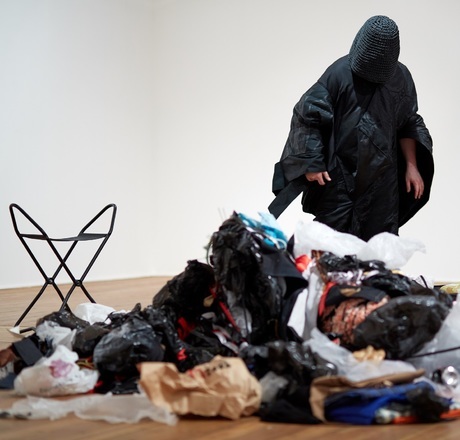
SEPTEMBER 23, 2018 / 3:00 PM—7:00 PM / ROOF OF BUILDING №5
On September 23, Leif Holmstrand (Sweden) will present the performance, “Nonsense Translation,” which will encapsulate his participation in the Zarya Artist-in-Residence program. Made possible with the support of the Swedish Embassy in the Russian Federation and Konstnärsnämnden, Sweden, the presentation will be held on the roof of Building № 5 of the Zarya Factory, from 3:00 pm until 7:00 pm. Entrance is free of charge, but age is restricted to 12+.
Leif Holmstrand works across genres, creating installations, objects and performances, as well as musical or literary compositions. Throughout his work, the artist makes frequent reference to shamanism and its contemporary rethinking. The culminating work of his residency, the performance “Nonsense Transition” offers a new perspective on research into this topic.
As in the majority of his previous performances, here Holmstrand develops a system of rules that will be followed throughout the duration of the action. The gestures produced by the artist vary, though they share the same objective: through interaction with set materials—in this case, household waste, garbage, textiles and clothing, threads, ropes, etc.—Holmstrand constructs a new “body.” Over the course of the performance, the artist will create an enormous textile object, a totem or talisman. The artist will leave the performance open-ended. This means the object might be complete, or it might remain in a state of construction, or it might even envelop its creator, ultimately ensnaring him within its complex structure. The scenography will draw from readymade elements of installations, sculptures, or, as the artist calls them, “non-magical transcendental objects,” created from old clothes or crocheted.
The selection of these specific materials is not accidental. Holmstrand confesses that since childhood he has been obsessed with fabrics, knots, ropes, weaving and knitting, which symbolize both a defense (like a cocoon) and a trap or a threat. He is additionally intrigued by the aspect of time in the process of knitting, and the sensation that something is growing organically with every added eyelet. In many of his works, Holmstrand uses different kinds of garbage, collected in the city. The artist consid ers this waste to be a reflection of urban life, allowing it to be read like the materialized voice of local culture, as well as abandoned, unwanted little bodies.
The soundtrack for the performance will be provided by one of Holmstrand’s musical pieces, RINGS DRAPA, which is based on an old Romantic poem by Swedish poet Esaias Tegnér. The rhythmic text is almost entirely transformed into sounds that seem to lack any relationship to language, with each of the various sections of the piece having their own distinct sound. This poetry-as-music accompanying the performance becomes a kind of melodious incantation, charms comparable to shamanic ritual. However, it should be noted that Holmstrand’s pseudo-shamanic practice has nothing to do with religion or magic. On the contrary, the artist emphasizes the lack of any magical character in his performances, offering them as a kind of secular, urban-animist shamanic ritual of construction.
In this performance, the artist will also reflect on his impressions of Vladivostok. To some extent, “Nonsense Translation” can be seen as illustrating a fragment of this city’s fluid, multinational, multicultural history as well as its present. Holmstrand was particularly influenced by the objects on display at the Arsenyev Museum, which inspired him to create the textile sculptures for the performance.
*Leif Holmstrand (born 1972) is an artist and writer from Malmö, Sweden. His practice as a sculptor and creator of visual images is multifaceted and includes several different stylistic approaches. For instance, his textile objects are supplemented with assemblage from pieces of furniture, as well as digital photocollage, sound installations and performances. The hierarchy of materials in his works is never clear, as for him even expensive silk has the same basic decorative function as household waste and found objects. Another important influence on his work has been his collaborations with Japanese artists and other cultural figures. For more about the artist, refer to his site: http://www.leifholmstrand.se
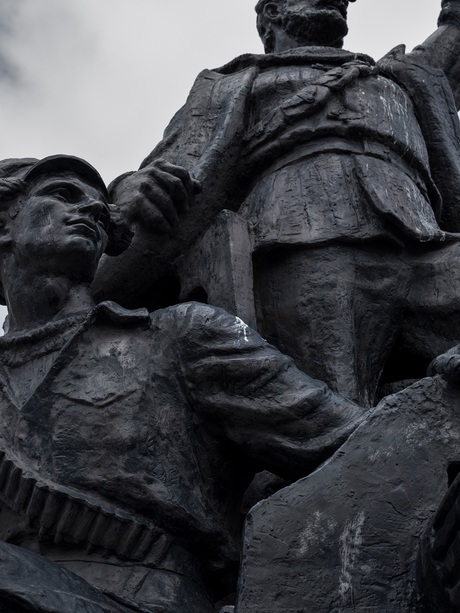
30 АВГУСТА – 9 СЕНТЯБРЯ / 19:00 / МАСТЕРСКАЯ АРТ-РЕЗИДЕНЦИИ (ЦРМ, 5 ВХОД)
30 августа в 19:00 в Мастерской арт-резиденции «Заря» (ЦРМ, 5 вход) состоится открытие выставки Хона Джинхвона (г. Сеул) под названием «✈☆☂☞☭☺♕⚒♖♘☃♡♬✞⚔», которая станет итогом пребывания во художника во Владивостоке. Экспозицию можно будет увидеть до 9 сентября. Для посещения обращайтесь на ресепшен.
В течение двух месяцев сеульский фотограф изучал Владивосток, сфокусировавшись на том, как отражается история места в пространстве города. В частности, предметом его интереса стали такие события российского прошлого, как революция, гражданская война, а также депортация российских корейцев. Отсылки к ним для художника оказались сконцентрированы в образе центральной точки Владивостока, Площади борцов за власть Советов. На протяжении своей резиденции Хон ежедневно посещал ее, наблюдая за изменениями в ее облике и функции, которую она выполняет, за ее повседневностью, туристами и горожанами. Кроме того, художник посетил Уссурийск – место, связанное с переселением корейцев на территорию Российской Империи во второй половине XIX века, а также с движением за независимость Кореи, колонизированной Японией в первой половине XX века, активисты которого базировались в окрестностях города.
«Для меня Россия и Владивосток тесно связаны с историей революции, а также насильственным переселением корейцев, – говорит художник. – Естественным образом я попал на Площадь борцов за власть Советов. Для меня это место, где метафорически закончилась российская революция и откуда спустя полтора десятилетия началась депортация российских корейцев. Эти истории физически сконцентрированы на этой площади. Сейчас ее роль изменилась – она буквально захвачена туристами и окружена торговыми центрами, и я никак не могу принять этого до конца».
Название выставки, состоящее из непроизносимых эмотиконов, отсылает к ситуации невозможности коммуникации, в которой оказался художник. Не зная русского языка, он был вынужден изучать город и общаться с помощью автоматического переводчика. Этот опыт выразился в видеоработе, которая представляет собой результаты автоматического распознавания и перевода с русского на английский текста прокоммунистической газеты, случайно полученной от активистов на центральной площади. Помимо фотографий и видео, художник представит небольшую повесть о Владивостоке, написанную специально для этого проекта. Это первый опыт автора в художественной литературе, позволяющий ему расширить границы повествования и рассказать то, что невозможно запечатлеть в фотографии.
Изучая какое-либо социальное или историческое явление, художник говорит, что постоянно сталкивается с невозможностью вынести определенное суждение. Для него всегда очевидна разница между актуальным событием, тем, каким оно представляется в фотографии, а также тем, каким его воспринимает зритель. «Я всегда начинаю с вопроса к самому себе: “Могу ли я полностью постичь предмет?”, на который сам же отвечаю, что это невозможно. Тогда я задаюсь новый вопросом: “В таком случае, какое новое понимание его я могу предложить?”» – рассказывает о своем методе Хон Джинхвон. С результатами его размышлений о Владивостоке и поисков нового смысла места все желающие могут ознакомиться на выставке.
ВХОД СВОБОДНЫЙ
*Хон Джинхвон (р. 1980) – южнокорейский фотограф, живет и работает в Сеуле. Его интересуют несовпадения между разнообразными аспектами социальной жизни, которые проявляются в его снимках. Помимо фотографии, Хон занимается выставками: он являлся одним из сооснователей самоорганизованного пространство Space Nowhere (Сеул, 2014-2017), а в настоящее время участвует в организации альтернативной фотоярмарки The Scrap (Сеул, с 2015 г.) и публикует тексты по теории фотографии. Проект для арт-резиденции «Заря» - второй по счету для художника в России, предыдущий был реализован художником в рамках проекта Baikal Nomadic Residency Program в Иркутске (2014-2015 гг.).
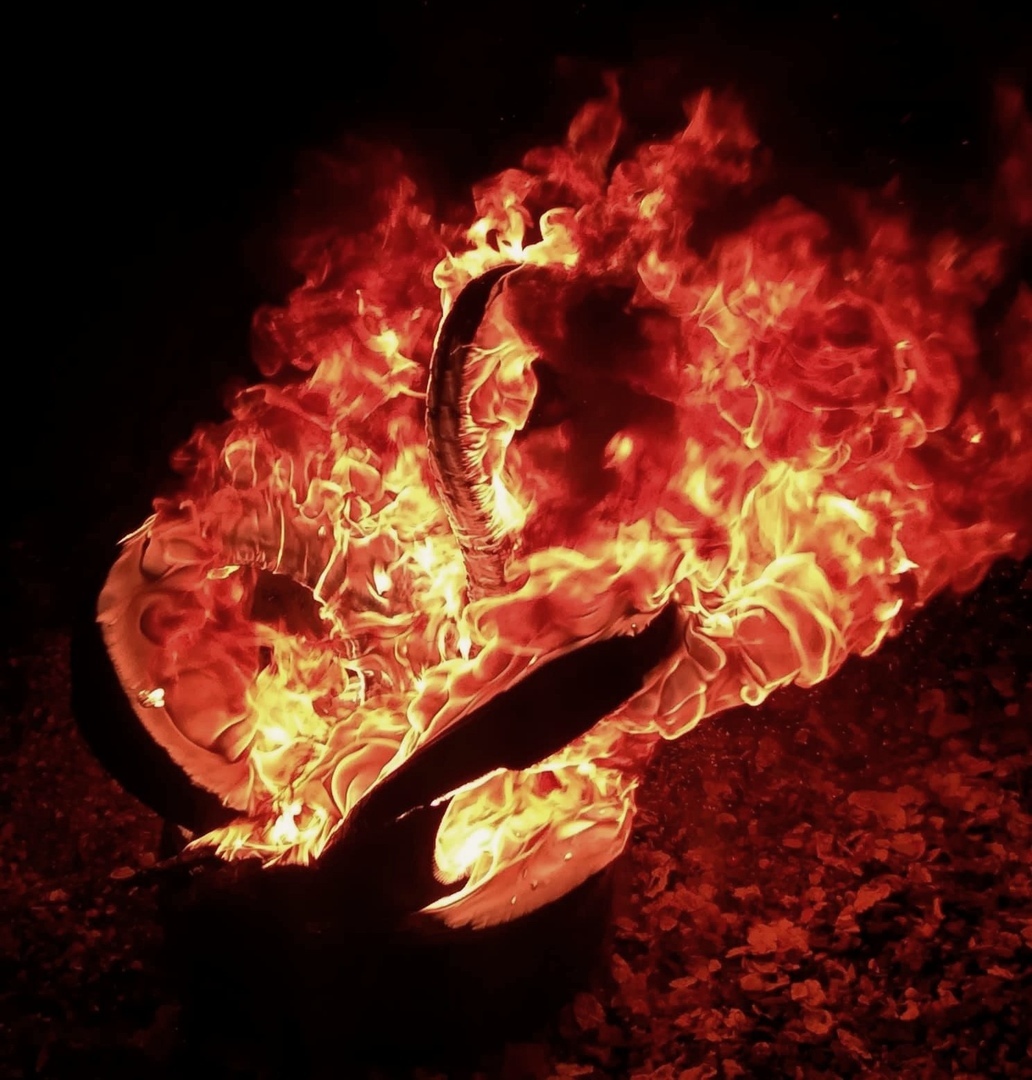
6-15 ИЮЛЯ / МАСТЕРСКАЯ АРТ-РЕЗИДЕНЦИИ (ЦРМ, 5 ВХОД)
Зона умолчания вокруг темы ГУЛАГа раскинулась не менее широко, чем сама «зона», огражденная двойным рядом колючей проволоки.
Взгляду приезжего наблюдателя, путника, чьи поиски то и дело нарушаются непрекращающимся джетлагом, присуща отстраненность, позволяющая выделить особенности восприятия истории местными жителями. Молодой город интенсивно развивается, и ему нет дела до рвов, полных человеческих костей. Здесь, на Дальнем Востоке, парадокс забвения как консервации памяти не работает. Забвение стирает следы.
Однако следы ГУЛАГа все же присутствуют всюду: разливаются по трубам водами из водохранилища, возведенного лагерными заключенными, пролегают построенными ими дорогами, о которые в резиновую пыль стираются шины с местного авторынка, струится волнами в эфире, обеспечивающими сотовую связь. Это радиоактивное излучение ГУЛАГа: вышки сотовой связи расположены на тех же местах, где заключенные «Дальстроя» возвели первые бетонные будки радиоузлов на сопках. Это излучение не покажет ни один счетчик Гейгера, но оно незримо присутствует везде.
SASHAPASHA в своей работе создают собственную систему образов, которая во многом строится из цитат и реминисценций: офицерская фуражка одновременно является и канвой для вышивки, и фрагментом карты, и «камнем» для тактической игры «го». Перелетные лебеди, птицы печали и мифологические психопомпы, долетают до дальневосточного берега, обретают специфическую форму и сгорают в пламени, превращаясь в насмешку над несбывшейся революцией. Тема трансцендентности и «шизофренической взаимосвязи всего со всем» отразилась и в интерпретации океанских вод как «адских врат», поглотивших «Индигирку» и ставших последним пристанищем «Дальстроя», после взрыва которого мазут пролился над морем инфернальным дождем, и природа до сих пор хранит следы катастроф.
Многочисленные символы вступают в диалог друг с другом, превращаясь в причудливую макабрическую головоломку, в которой зашифрованы сюжеты мифов, сказок, современной литературы и факты истории. Для всех желающих распутать этот сложный клубок смыслов и контекстов художники оставят набор подсказок – часть информационных материалов, которыми они пользовались при подготовке к созданию работы.
Арт-резиденция «Заря» выражает благодарность Приморскому государственному музею имени В.К. Арсеньева, Музейно-выставочному центру г. Находка и Приморской краевой публичной библиотеке им. А.М. Горького за помощь в поиске информации.
ВХОД СВОБОДНЫЙ
*Справка: SASHAPASHA – дуэт художников Александры Ротц (1985 г.р.) и Павла Ротца (1982 г.р.), основанный в 2009 г. в Санкт-Петербурге. Живут и работают в Хельсинки, Финляндия. Окончили Институт PRO ARTE, Вечернюю школу Мемориала, Санкт-Петербургскую государственную художественно-промышленная академию имени А.Л. Штиглица, работают и продолжают образование в Финляндии. SASHAPASHA работают с различными медиа: анимация, живопись, инсталлянция, перформанс и т.д. Они также являются основателями одноименного бренда украшений. В 2016 году вошли в лонг-лист премии Сергея Курёхина в номинации Гран-при.

28 ИЮНЯ - 2 ИЮЛЯ / МАСТЕРСКАЯ АРТ-РЕЗИДЕНЦИИ (ЦРМ, 5 ВХОД)
Инициатор проекта, финская художница Лилли Хаапала – потомок финского путешественника Эрика Кнаапе, прибывшего в 1869 году со своей семьёй в составе группы переселенцев из Финляндии. Спустя полторы сотни лет после этих событий она вместе с оператором Юри Яласмаки прибыла на Дальний Восток, чтобы своими глазами увидеть берега, на которые высадились ее предки в поисках утопии. От поселений энтузиастов, грезивших о лучшей жизни, практически не осталось зримых следов. Проходя теми же маршрутами, что их предшественники, собирая информацию в архивах и музейных хранилищах, художники не столько воспроизводят перед зрителем картину событий вековой давности, сколько создают собственную концептуальную структуру, в которой “научное” мышление сплетается с “утопическим”, история рассматривается как проекция одного временного измерения в другое, фантастической картины мира – на реальность.
География исследования, проведенного Лилли Хаапала и Юри Яласмаке, обширна. Свой путь художники начали в финском городе Турку, пересекли Россию на поезде, побывали на полуострове Песчаном и бухте Находка. Карта путешествий Лилли и Юри разворачивается перед посетителем настольной игрой, отсылающей к выпущенной в Финляндии в 1951 году “Звезде Африки” - популярной детской бродилке о приключениях авантюристов, разыскивающих драгоценный клад.
Таким образом, скупые данные и сухая информация, добытые художниками в архивах, обретают совершенно новую форму. Участники исследования Searching for Utopiaоказываются фигурами на поле, а императив истории с ее неоспоримыми фактами и неизбежной последовательностью событий нарушает элемент случайности. Каждый следующий ход обусловлен не только пространственно-временными факторами, но и персональной удачей, поэтому сценарий игры непредсказуем.
Вход свободный, для посещения необходимо обратиться на ресепшен ЦСИ «Заря».

JUNE 08 - SEPTEMBER 23
ON JUNE 8, THE ZARYA CENTER OF CONTEMPORARY ART OPENS THE EXHIBITION “UNIVERSE OF RELATIONS”, BRINGING TOGETHER MEDIA ART, VIDEO AND PHOTOGRAPHY DEALING WITH VARIOUS ASPECTS OF ARCHITECTURE AS A SOCIAL PHENOMENON.
EXHIBITION CURATOR — ANDREY VASILENKO
ADMISSION FREE OF CHARGE
The exhibition “Universe of relations” brings into focus how an architectural environment can operate as a full participant in the space of social interactions, while also acting as a bearer of historical memory. The works of artists presented within this exhibition may use a variety of methods to represent architectural objects, but their message is one and the same: architectural objects and the practice of design are not just the result of the creative toil of one individual, striving to meet his or her own needs alone. Instead, the artists explore architecture as, on the one hand, a reality that affects a person, structuring his or her everyday life, thereby revealing itself as a full-fledged subject in and of itself, and on the other, a massive archive, enormously impacting how we construct an image of the past.
The central channel of this discussion – the media of photography and video – offers a perspective on the artificial living environment that is filtered through the speculative view of the documenting instrument – the camera. The world of architectural objects and city spaces that unfolds before the viewer is markedly different from the perspective and sensations of the user of that urban environment. In this way, the researcher’s view is established as that of an outside observer, distanced from the object of study and thus stripped of user status, existing beyond the direct impact of the architecture.
Instead, the exhibition looks at architecture through its social, political and historical dimensions. For instance, in the video of Lithuanian cinematographer Deimantas Narkevicius, Scena, frames showing the interiors and exteriors of the Center of Contemporary Art in Vilnius (the former Palace of Artistic Exhibitions) are accompanied by fragmentary narratives from the center’s employees. They speak about their experiences working in the building that was once tainted as part of the artistic system of one era, but now exists in a completely different political and ideological reality.
Amid the objects on display will be several works dedicated to rethinking the Modernist project through an analysis of the symbolic influence of architecture on the political and ideological climate of the past century. Austrian artist Andreas Fogarasi captures the transforming interiors of the work clubs of Budapest, which were originally designed to facilitate the leisure time of workers, but ended up not being necessary after the fall of the communist regime in Hungary.
In the installation by Filipa César, Porto, 1975, a residential complex, designed by the preeminent Portugese architect Álvaro Siza, is presented as a kind of monument to self-organization and the revolutionary movement.
Some of the central works in the exhibition are the sketches and videos of the French-Israeli artist Absalon, who created unique installations, inhabitable “living units”, which, according to the artist, could aid a person on the path to self-knowledge, including on the physical level.
In Andreas Bunte’s video, Erosion, we see buildings on the campus of Simon Fraser University, located on the outskirts of Vancouver. The structures are not presented as an architectural complex, as far as the traditions of photo and video footage of structures go. Rather, the artist acts like a geologist, or maybe even an anatomist, depicting the buildings as living organisms, existing in close cooperation with the natural landscape.
The exhibition will be presented in two acts. Midway through the exhibition period, a selection of the works included in the first part of the show will be swapped out, altering the tonality of the overall symbolic composition of the exhibition. Also within the framework of the exhibition will be two substantial film programs, consisting of documentary, artistic, and experimental films that demonstrate the wide repertoire of creative interpretations of architectural practice.
Picture: EROSION. Andreas Bunte. Erosion. 16mm film transferred to HD Video, colour, sound / 17:25 min / 2015. Courtesy of Artist